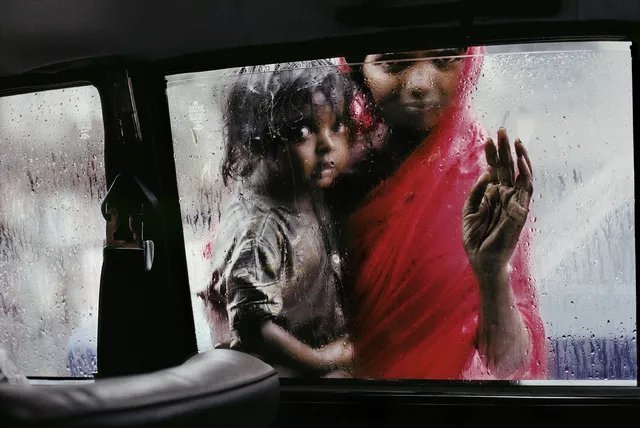Steve McCurry: Pictorial Storytelling.
The legendary lensman explains the difference between photojournalism and photographic art, and ponders what constitutes a compelling travel photo.
STEVE MCCURRY (as told to Christian Barker): I think that when you work for somebody else, and there’s expectations, and requirements and deadlines, that’s always in the back of your mind — you’re trying to please, or trying to deliver on some expectation.
Journalism is about presenting the facts. Say you’re photographing a demonstration. You want to show, how many people were there? Who spoke? What was the look? I think if you’re a photojournalist, and you’re photographing an event, you want to show what it looked like. Maybe it’s not so important what it felt like it… For me, I’m more interested in the poetry out on the street, people, human behaviour. And I’m not so much interested in trying to describe a place in a more literal sense. Because I’m not working for a news outlet or a magazine, I’m working for me.
What fascinates me, what interests me, what do I want to say? How does it move me, personally? It’s not so much about the facts. I don’t want to be assigned to go here, to go there. I want to go to the places that I want to go. I think as you get older, you realise that life is finite. And then you want to do something which is more about your own expression. You want to maybe take the situation and say, ‘Well, what does this mean to me? How can I create something reflects my feelings about this place, personally?’
“I want to go somewhere and do what I want to do, and I want to tell my story... I don’t want to have to fulfil some list”
I’ve done a lot of travel stories. If a travel magazine sends me to Singapore, for example, I know what they want. They’re not gonna send me to Singapore and say, ‘Do what you want. We want your impression. You do whatever you want.’ Which would mean to me like, well, if I want to sleep in, I’ll sleep in. If I want to have a long lunch with a bottle of wine, I can do that. This downtown area is kind of boring, I’m gonna go out to [red-light district] Geylang, that’s the part of Singapore that speaks to me visually. The magazine would come back and say, ‘Holy shit, man. That’s, that’s not what we wanted!’
So, I think that’s where I’m at. I want to go somewhere and do what I want to do, and I want to tell my story. I don’t want to tell their story. I don’t want to have to fulfil some list, come to Singapore and shoot fifteen minutes after sunset, when all the lights are on, it’s really sexy, get the casino with the infinity pool, blah-blah-blah. I mean, I want to run from that as fast as I can.
But, if you say, ‘I want to pay you a shitload of money to do that’? I’m your man! Sure, I’ll do that — shoot the infinity pool, fifteen minutes after sunset. You know, so it’s either I want to get paid a lot of money, or I want to do my thing. And in journalism, they want you to work for free. And I don’t want to work for free now.
I think, a good travel picture, it’s something intriguing, that captures your imagination, something where there’s a story, there’s something that stays with you. I mean, I think it has to be about something. It has to be simple, perhaps. But there should be some emotional component — it maybe makes you laugh or cry or feel something. That’s basically it.
I shot a mother and child at a car window in Bombay, she’s holding a baby. That was moving. I thought it told a story about desperate people and how they have to do what they have to do, and then the two worlds: they’re out on the street in the rain on traffic and I’m in this air-conditioned bubble. And how we don’t really connect. I like pictures that you can interpret, you can make up your own story. And sometimes the story is better, your fantasies are better maybe than the real story. Because sometimes, in truth, there is no story.
Interview organised thanks to Leica.

